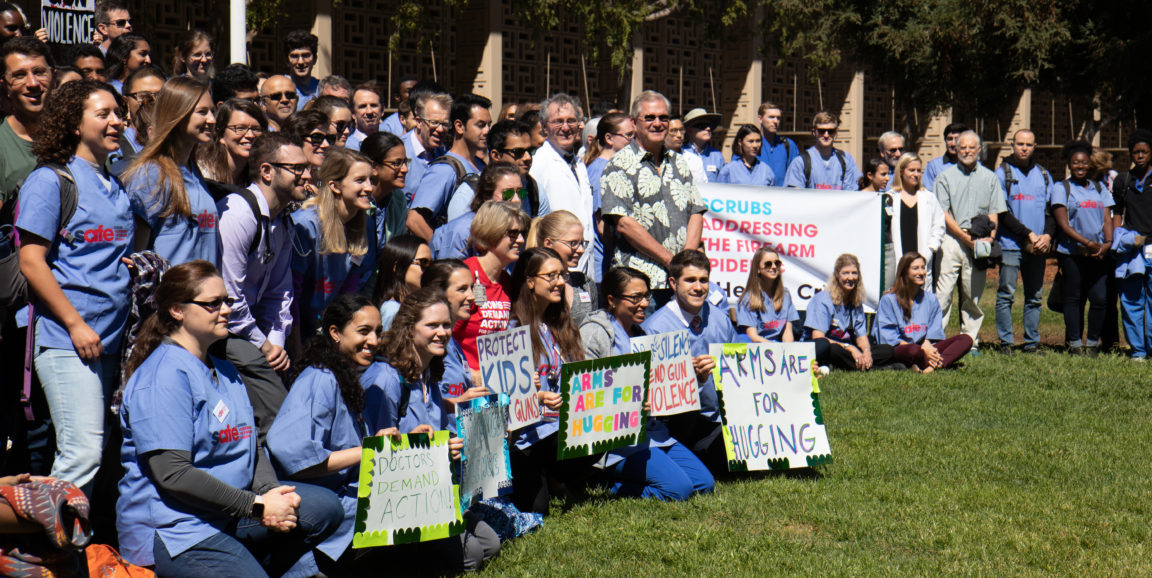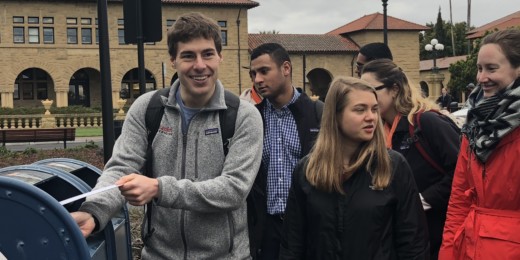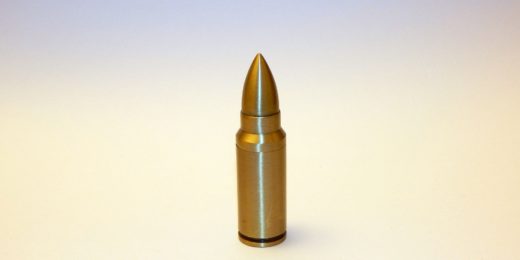First-year medical student Quan Tran came to the rally because her father was held up at gunpoint walking home from a BART station in Oakland, and she sees gun violence as an epidemic.
Rebecca Smith-Coggins, MD, a professor of emergency medicine, came because she has seen the damage from firearms in three decades of practicing medicine, and she wants more to be done to prevent it.
Hannah Keppler, MD, a resident in pediatrics, came because gun-related injuries are one of the leading causes of death for children.
“We have to address it as a serious public health issue,” Keppler said, gripping a hand-made “Arms Are for Hugging” sign. “We feel like physicians are in a good position to speak about the evidence.”
That sentiment echoed again and again on Monday, when more than 300 doctors, residents and medical students gathered on the Stanford Medicine campus to support reducing firearms violence in the United States. The event, the first sponsored by the non-profit Scrubs Addressing the Firearms Epidemic or SAFE, was replicated at more than 40 medical schools across the country. Participants wearing blue scrub tops customized with a red SAFE logo posed for photographs to raise awareness.
Fourth-year medical student Sarabeth Spitzer, a co-chair of SAFE and co-organizer of the campus event, told the crowd that research, education and evidence-driven solutions are the keys to preventing injuries and deaths from guns.
“We have to fight for these resources,” she said, “so we can fight for our patients.”
Spitzer started SAFE earlier this year with Stanford professor of medicine Dean Winslow, MD, to bring together health professionals in like-minded movements around the country. The organization eschews political debates to focus on research and education as a means for increasing firearms safety while respecting the Second Amendment.
Winslow, a retired U.S. Air Force colonel and flight surgeon, decided to speak out about gun violence after an inadvertent comment on the subject at his Senate Armed Services Committee confirmation hearing last fall, two days after the mass shooting in Sutherland Springs, Texas. His statement that it was “insane…that in the United States of America a civilian can go out and buy a semiautomatic weapon like an AR-15,” proved controversial, but seemed to strike a chord with many of his health and military colleagues. He withdrew from consideration for assistant secretary of defense for health affairs, and changed his focus.
On Monday, Winslow reminded the audience of public health successes, including reduction of vaccine-preventable disease and of car crash fatalities through widespread use of seatbelts and airbags.
“All of these measures —which we take for granted now as being part of our lives, being important and being necessary — were opposed very vigorously in many cases when they were originally proposed,” he said.
Speeches by Winslow, Spitzer, pediatrician Michelle Sandberg, MD, and former Stanford School of Medicine Dean Philip Pizzo, MD, were followed by an afternoon of classroom lectures. Through photographs and heart-wrenching anecdotes, Stanford medicine faculty members presented the grim reality of what it’s like to treat patients with gunshot wounds and to inform relatives of firearms-related deaths. They also spoke of the importance of understanding gun violence research and the laws around it, as well as the power of combining personal stories with data to provide a more complete picture of the issue.
Colin Bucks, MD, recounted a night during his training at a hospital in Philadelphia in which 17 gunshot wounds were treated: “There was literally just blood flowing out from the trauma bay,” he said. The boyfriend of clerk in the pediatric emergency room was one of the victims, shot randomly in the parking lot when he came to pick her up from work. She realized it when she recognized his shoes in the trauma bay.
“She collapsed. She wailed,” said Bucks, a clinical assistant professor in emergency medicine. “In amongst this torrent of bodies and injuries, we had one of our own grieving there. I haven’t forgotten it.”
Photo by Henry Tenenbaum






